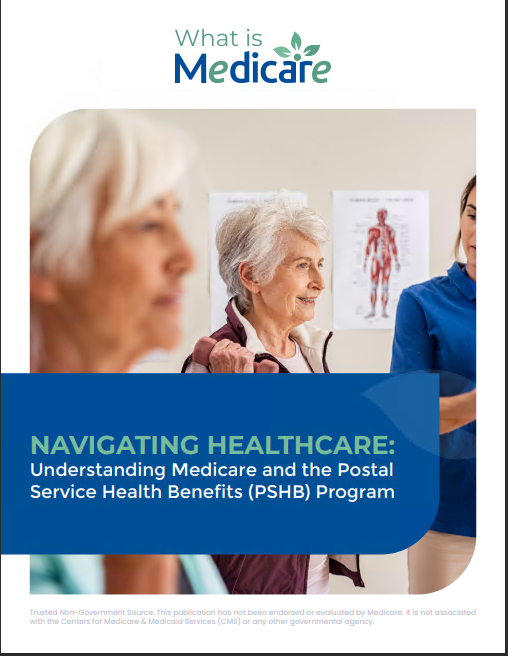Key Takeaways
-
Medicare in 2025 comes with predictable costs if you understand the parts, timelines, and what you are expected to pay out of pocket.
-
You are responsible for premiums, deductibles, coinsurance, and copayments that vary by the type of Medicare coverage you choose.
Understanding the Basics: What You Pay for Medicare in 2025
When you turn 65 or become eligible for Medicare in 2025, the first thing you want to know is: how much is this going to cost? While Medicare offers important health coverage, it isn’t free. In fact, there are several components to what you may pay, and each one depends on the specific part of Medicare and your personal situation.
To make it easier, let’s look at each part individually—Parts A, B, and D—since these make up Original Medicare and prescription drug coverage. Medicare Advantage plans (Part C) exist too, but since costs vary widely and are managed by private providers, we won’t discuss them in detail here.
Part A: Hospital Insurance
Medicare Part A covers hospital stays, hospice care, skilled nursing facility care, and some home health services. You may not pay a monthly premium if you or your spouse paid Medicare taxes for at least 40 quarters (10 years). This is often referred to as “premium-free Part A.”
If you didn’t meet that work requirement, you do pay a monthly premium. In 2025:
-
If you paid Medicare taxes for 30–39 quarters, your monthly premium is $284.
-
If you paid for fewer than 30 quarters, your premium is $518 per month.
In addition to premiums, you are also responsible for a deductible and coinsurance:
-
The deductible per benefit period is $1,676.
-
You pay $0 for the first 60 days of inpatient hospital care (after the deductible).
-
For days 61–90, you pay $419 per day.
-
Beyond 90 days, you begin using lifetime reserve days at $838 per day, up to a maximum of 60 days in your lifetime.
Part B: Medical Insurance
Medicare Part B covers doctor visits, outpatient care, preventive services, and some home health services. Part B comes with a monthly premium and a yearly deductible.
In 2025:
-
The standard monthly premium is $185.
-
The annual deductible is $257.
-
After you meet the deductible, you typically pay 20% coinsurance for most covered services.
Keep in mind that if your income is above a certain level, you may pay more due to Income-Related Monthly Adjustment Amounts (IRMAA). These are based on your tax return from two years ago (i.e., your 2023 income).
Part D: Prescription Drug Coverage
Part D helps cover the cost of prescription drugs. It is optional but highly recommended unless you have other creditable drug coverage. You buy Part D coverage through private insurers, so premiums and drug costs vary. However, some fixed costs apply across all plans in 2025:
-
The maximum deductible is $590.
-
Once your total out-of-pocket spending reaches $2,000, you enter catastrophic coverage and pay nothing more for covered drugs for the rest of the year.
This is a big change from previous years and eliminates the confusing “donut hole.” The $2,000 out-of-pocket cap now simplifies what you need to budget for prescription drug costs in 2025.
Other Out-of-Pocket Costs to Expect
Even with Medicare, you still pay a portion of your healthcare costs. These include:
-
Copayments for things like office visits or emergency room services.
-
Coinsurance percentages for specific services.
-
Excess charges, which apply if your provider does not accept Medicare assignment.
-
Late enrollment penalties, if you delay enrolling in Part B or Part D when first eligible.
Medicare Supplement Insurance (Medigap)
If you want help covering what Original Medicare doesn’t pay—like deductibles, coinsurance, and copayments—you can purchase Medigap. These plans are sold by private companies, and while we won’t go into pricing, it’s important to know:
-
You must be enrolled in both Part A and Part B to get Medigap.
-
You pay an additional monthly premium for Medigap, separate from your Part B premium.
-
Medigap doesn’t cover prescription drugs, dental, vision, hearing aids, or long-term care.
Enrollment Windows Matter More Than You Think
When you sign up affects what you pay and whether you incur penalties. Here are the 2025 enrollment periods to remember:
Initial Enrollment Period (IEP)
-
Lasts 7 months—3 months before, the month of, and 3 months after you turn 65.
-
If you miss this window and have no other coverage, you may face late penalties.
General Enrollment Period (GEP)
-
Runs from January 1 to March 31 every year.
-
Coverage begins July 1 of the same year.
-
Late enrollment penalties apply if you didn’t qualify for a Special Enrollment Period.
Medicare Advantage and Part D Annual Enrollment Period (AEP)
-
Happens every year from October 15 to December 7.
-
Changes made take effect January 1 of the following year.
Medicare Advantage Open Enrollment Period (MA OEP)
-
From January 1 to March 31, if you’re already enrolled in a Medicare Advantage plan.
-
You can switch plans or return to Original Medicare.
Income-Related Costs You Should Plan For
Higher-income beneficiaries pay more for Part B and Part D premiums due to IRMAA. In 2025, the income thresholds are:
-
Individuals with income over $106,000.
-
Couples filing jointly with income over $212,000.
These income limits are based on your 2023 modified adjusted gross income (MAGI). If your income exceeds these limits, Medicare will notify you of your higher premium amount.
Programs That Help Lower Your Costs
There are several federal programs that can help reduce your Medicare costs if you qualify:
-
Medicare Savings Programs (MSPs) – Help pay Part A and/or Part B premiums, deductibles, and coinsurance.
-
Extra Help (Low-Income Subsidy) – Helps cover Part D costs.
-
Medicaid – If you qualify based on income and assets, Medicaid can help pay for things Medicare doesn’t.
You must apply for these programs through your state or Social Security office. Eligibility is income- and asset-based.
Long-Term Cost Planning: Don’t Forget the Gaps
While Medicare offers valuable coverage, you still need to plan for things it doesn’t fully cover:
-
Dental and vision care – Routine check-ups, eyeglasses, and dentures are not included.
-
Hearing aids – Not covered by Original Medicare.
-
Long-term care – Nursing home stays and custodial care are not covered.
You may need to explore supplemental coverage or personal savings to fill these gaps.
Timeline Recap: What You Should Do and When
-
Age 64: Start researching your Medicare options.
-
3 months before turning 65: Enroll during your Initial Enrollment Period if you don’t have other qualifying coverage.
-
January to March: Make any necessary changes during General or Medicare Advantage Open Enrollment.
-
October to December: Review your current coverage and decide if you need changes for the next year.
This timeline helps you avoid penalties and make the most of your Medicare benefits.
What Medicare Really Costs in 2025 Depends on You
There’s no one-size-fits-all answer to what you’ll pay for Medicare in 2025. Your total out-of-pocket expenses depend on several things:
-
Whether you worked enough to get premium-free Part A.
-
If you choose Original Medicare or add Medigap.
-
Whether you need prescription drug coverage.
-
Your income and eligibility for savings programs.
But with clear information and attention to deadlines, you can prepare for Medicare’s costs and avoid unwanted surprises. Don’t let confusing terms or overlooked timelines affect your financial plans. For professional help, get in touch with a licensed agent listed on this website to get answers tailored to your needs.










